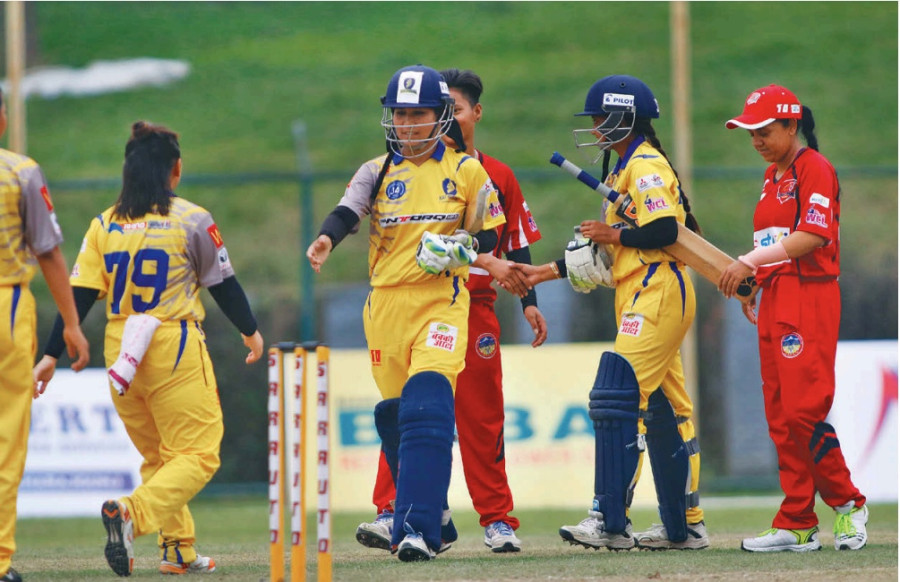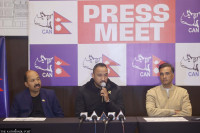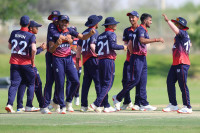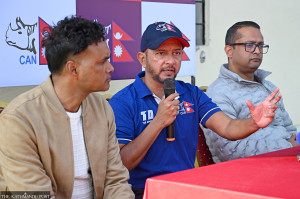Cricket
Cricket governing body announces central contracts for players, but gender pay gap is huge
The ‘A’, ‘B’ and ‘C’ grade male cricketers would get monthly salaries of Rs 50,000, Rs 40,000 and Rs 30,000 while their female counterparts would receive Rs 15,000, Rs 12,000 and Rs 10,000, respectively.
Prajwal Oli
Cricket Association of Nepal, the country’s cricketing governing body, on Tuesday announced central contracts for Nepali cricketers–both male and female. However, the gender pay gap was glaring, with male players likely to rake in three times more than their female counterparts.
The cricket body announced central contracts has categories players in three groups.
While the ‘A’, ‘B’ and ‘C’ grade male cricketers would get monthly salaries of Rs 50,000, Rs 40,000 and Rs 30,000, respectively, the female players would get Rs 15,000, Rs 12,000 and Rs 10,000, respectively.
This is the first time women cricketers in Nepal have been “employed”, as they will now get monthly remuneration even though they made their forays into international cricket some 13 years ago. The male players have been getting the central contracts since 2012.
Former national men’s team captain LB Chhetri though appreciated the move to award central contracts to the women players, he expressed his concerns over the disparity and pay gap.
“Such disparity shows that we are still far behind when it comes to acknowledging the contributions women cricketers have made for the sport,” Chhetri told the Post. “It looks like we are showing mercy to female cricketers who make an equal effort for their country.”
Nineteen women cricketers have been graded for the monthly salary with six as grade “A” players, eight as grade “B” players and six as grade “C” players.
National women cricket captain Rubina Chhetry and Nary Thapa, Indu Berma, Karuna Bhandari and Sita Rana Magar have been categorised as “A” listed players. Similarly, Jyoti Pandey, Apsari Begam, Roma Thapa, Bindu Rawal, Kabita Joshi, Ritu Kanaujiya, Sarita Magar and Kajal Shrestha fall under grade ‘B.’ The grade ‘C’ players are Kabita Kunwar, Dolly Bhatta, Anuradha Chaudhary, Sonu Khadka, Anjali Chand and Shova Ale.
Nation women team captain Chhetry, however, hailed the move as a step forward.
“It is a good start that women cricketers have been awarded central contracts for the first time. This move will be quite helpful in motivating the players,” Chhetry told the Post. “This contract should have been awarded a long time ago, but I would say it’s better late than never.”
She refused to comment on the gender pay gap, saying “it’s not the right time to compare such things.”
“We hope to have some improvements in the future,” she told the Post. “There are many senior players who are in their latter stage of their career. They have given their prime youth to the sport. It would be good if the governing body thinks about their future when they hang their boots.”
So far, what all women players used to earn was stipends–up to $35 a day when they participated in international tournaments. Domestic tournaments, which are few and far between, however, used to fetch them nominal money as a match fee.
Gender pay disparity has been a global issue and in the world of sports, many of late have been advocating for bridging the gap. In Nepal, cricket lately has gained immense popularity and both men and women teams have been faring well.
Men’s team, however, usually gets more attention when they play international tournaments compared to women.
While the men’s national team has quite some international matches lined up for them, women players have to wait in their wings until qualifiers are held.
Cricketers themselves believe that the governing body needs to work more to promote female players
Chhetri, the former men’s team captain, said the authorities who govern Nepali cricket must understand that women players too can perform on par with their male counterparts and that they deserve equal promotion.
“Women cricketers have always been under the shadow of the male cricketers and the central contracts are a good example of how women are discriminated against,” Chhetri told the Post. “While there is equality in payments when men and women work anywhere else, why this discrimination when it comes to sports? Women cricketers to make the country proud when they compete in the international games.”
According to Chhetri, such disparity can cause inferiority complex among female players and discourage new talents from entering the game.
Ashok Nath Pyakurel, secretary at Cricket Association of Nepal, however, defended the move, saying it is but natural for male cricketers to receive more in remuneration than their female counterparts.
In the grading for year 2020, men’s cricket team captain Gyanendra Malla, former captain Paras Khadka, Sandeep Lamichhane, Sharad Vesawkar, Karan KC, Basanta Regmi, Dipendra Singh Airee and Binod Bhandari have been categorised as grade ‘A’ players.
The ‘B’ grade players include Susan Bhari, Sompal Kami, Pawan Sarraf and Aarif Sheikh. Subash Khakurel, Rohit Paudel, Kushal Malla, Rashid Khan, Abhinash Bohara and Kamal Singh Airee have been listed as grade ‘C’ players.
“Whoever plays more games will definitely get more in salary. There are few women tournaments compared to male tournaments at the international level,” Pyakurel told the Post. “Moreover, one must take this announcement in a good light, as at least women cricketers are now being recognised and being paid, as they were not getting anything in salary before.”
According to Pyakurel, players must be hopeful that the amount will go up in near future. “As we have more resources, we will definitely like to give a salary hike to players,” said Pyakurel. “We actually wish women cricketers should get more in salary than their male counterparts.”




 5.81°C Kathmandu
5.81°C Kathmandu















